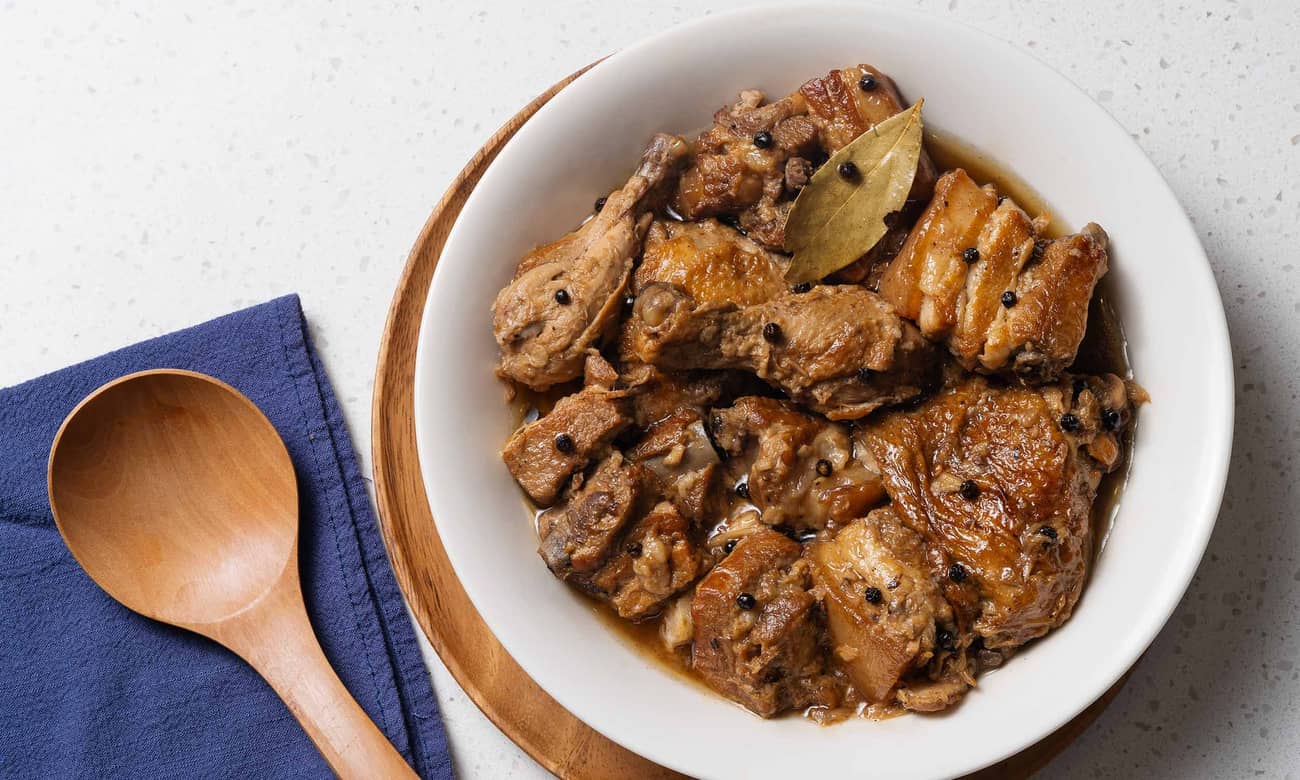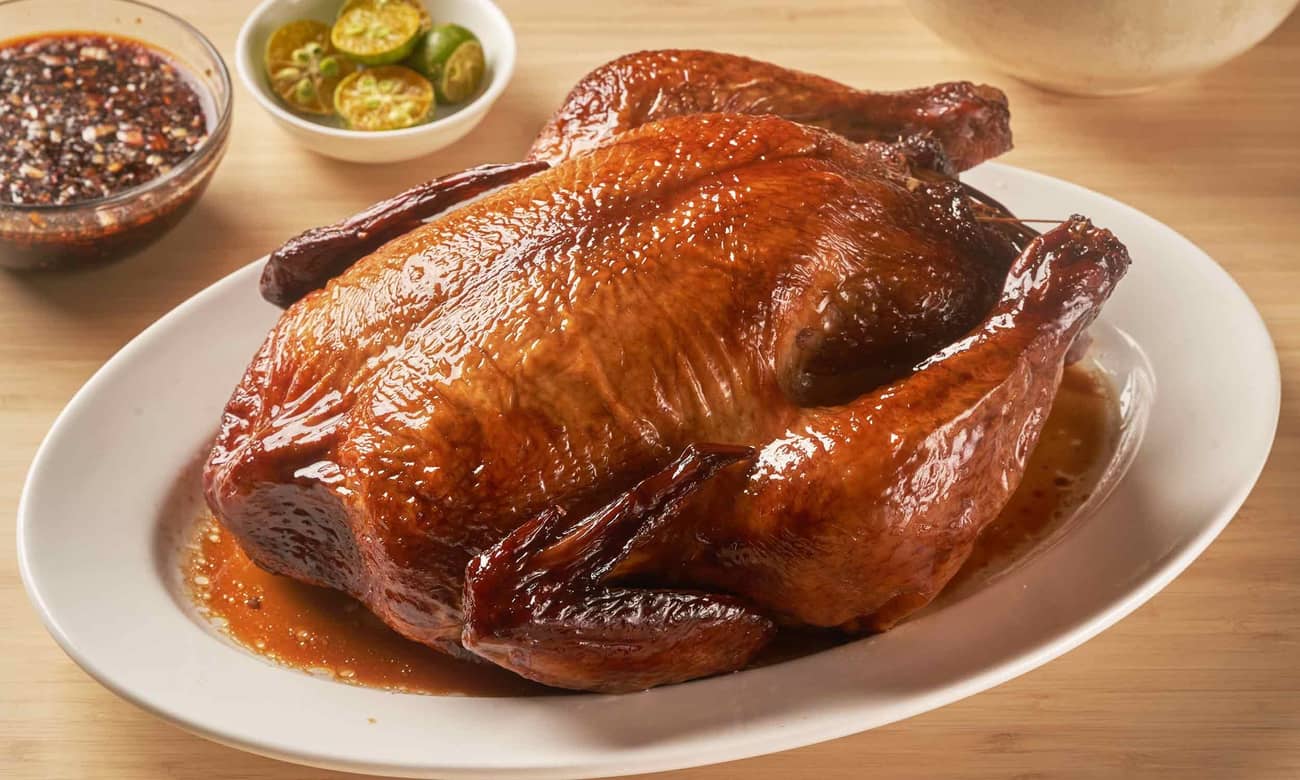
Adobong manok like chicken and gravy: tender chicken with a rich, velvety adobo sauce thickened with butter and flour.
Any adobo, whether it’s chicken or pork or both, will either be one of two things: swimming in sauce, or reduced until sticky-dry and glossed with fat. We like to differentiate these into “wet” or “dry” adobo. Both are good and are a matter of the home cook’s preference.

Adobo refers to the Filipino dish and cooking technique where ingredients are braised in vinegar with salt (usually soy sauce), garlic, peppercorns, and bay leaves. Almost anything can be adobo: meat, fish, seafood, vegetables. You’ll find endless variations on adobo across the Philippines, each with their own unique flavors, ingredients, spices, and textures.
This recipe presents a third option: the “gravy” adobo. Classic Filipino meets French technique with a roux-based adobo sauce. Instead of reducing, we experimented with thickening the adobo sauce with butter and flour.
Cool thing we discovered: Because the adobo sauce is thick, buttery, and full-bodied, the tangy, savory flavors linger on your tongue a little longer, making you taste your usual adobo in a whole new way (more on that below).
If you want to thicken a sauce, the most common way to do it is with a a mixture of fat and flour, often in equal parts.

We don't just copy random recipes. We taste test every single one.
Easily search and save your favorites.
Chefs develop our food with techniques made easy for home cooks.
To make a roux, you melt fat (can be butter, oil, rendered meat drippings), add flour, then whisk over low heat until a smooth paste forms.
The longer you cook a roux, the darker it gets. The three types of roux are based on this progression in color:
Once your roux is ready, slowly whisk in your liquid. Let it simmer and reduce until the sauce thickens to your liking.
Flavor release is the way flavors show up over time while you’re eating.
Some flavors you taste right away, like acidity, saltiness, or heat (think of biting into a red chili). Others develop more slowly, like umami, bitterness, or the subtle aromas from herbs and spices.
How food releases flavor has a lot to do with things like texture, fat, and temperature. Example: Crunchy foods release flavor quickly because they break apart fast, letting flavors escape right out the bat. Creamy foods, like chocolate or cheese, coat your mouth and melt slowly, releasing flavor more gradually.
The roux-thickened adobo sauce in this recipe has a thicker, creamier, fuller body. In turn, its flavors unfold more slowly, too. Instead of tasting everything at once, you get the adobo’s sour, salty, and savory notes one after the other, stretched out over time. That lingering sequence makes the flavors feel more distinct—and gives you a new way of experiencing adobo.
If this all sounds abstract, give it a try to understand!

